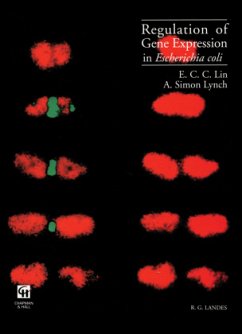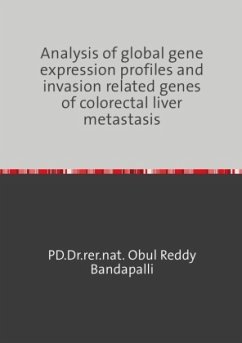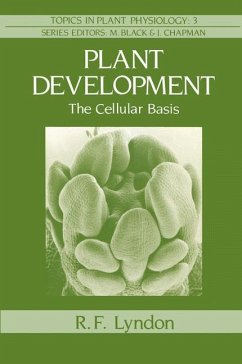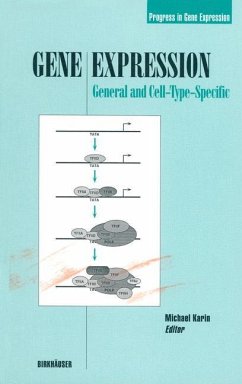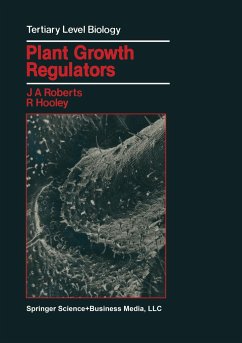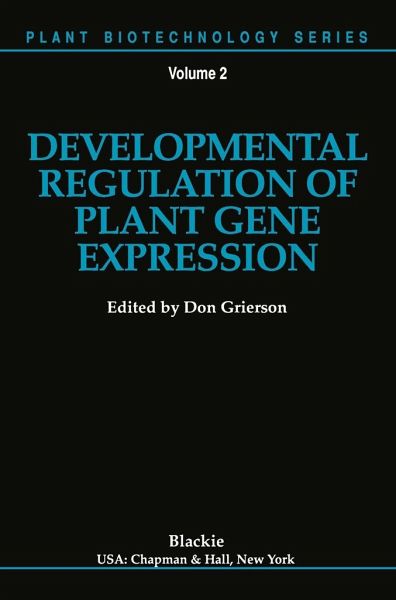
Developmental Regulation of Plant Gene Expression
Versandkostenfrei!
Versandfertig in über 4 Wochen
93,99 €
inkl. MwSt.

PAYBACK Punkte
47 °P sammeln!
1 Photoregulation of plant gene expression.- 1.1 Introduction.- 1.2 Photoregulatory responses and levels of control.- 1.2.1 Genes respond differentially to light.- 1.2.2 Transcription is the primary, but not the only, level at which gene expression is controlled by light.- 1.3 Photoreceptors.- 1.3.1 Phytochrome mediates responses in dark-grown plants.- 1.3.2 Developing plastids produce a factor that is required for maximal expression of genes encoding chloroplast proteins.- 1.3.3 In mature leaf tissue phytochrome acts in conjunction with a UV-blue photoreceptor.- 1.3.4 A UV-B photoreceptor int...
1 Photoregulation of plant gene expression.- 1.1 Introduction.- 1.2 Photoregulatory responses and levels of control.- 1.2.1 Genes respond differentially to light.- 1.2.2 Transcription is the primary, but not the only, level at which gene expression is controlled by light.- 1.3 Photoreceptors.- 1.3.1 Phytochrome mediates responses in dark-grown plants.- 1.3.2 Developing plastids produce a factor that is required for maximal expression of genes encoding chloroplast proteins.- 1.3.3 In mature leaf tissue phytochrome acts in conjunction with a UV-blue photoreceptor.- 1.3.4 A UV-B photoreceptor interacts with other photoreceptors to control chalcone synthase gene expression.- 1.3.5 Expression of several photoregulated genes exhibits a circadian rhythm.- 1.3.6 The phytochrome genes are subject to autoregulation.- 1.3.7 Overexpression of phytochrome genes in transgenic plants causes morphogenetic effects.- 1.4 DNA sequence elements responsible for photoregulation.- 1.4.1 RbcS genes.- 1.4.2 Cab genes.- 1.4.3 Phytochrome genes.- 1.4.4 The ferredoxin gene.- 1.4.5 Chalcone synthase genes.- 1.5 Concluding remarks.- References.- 2 Hormonal regulation of plant gene expression.- 2.1 Introduction.- 2.2. Auxin: rapid effects on anonymous genes.- 2.2.1 Relating auxin-regulated gene expression to auxin growth responses.- 2.3 Gibberellin: coordinate and non-coordinate regulation of gene expression.- 2.3.1 Approaching the molecular mechanisms of GA regulation.- 2.3.2 The acquisition of GA sensitivity.- 2.4 Abscisic acid: stress and development.- 2.5 Cytokinin and ethylene.- 2.5.1 Control of gene expression by cytokinin.- 2.5.2 Control of gene expression by ethylene.- 2.6 Conclusion.- References.- 3 Gene activity during tuber formation in the potato (Solanum tuberosum).- 3.1 Introduction.- 3.2 Development and anatomy of the tuber.- 3.3 Biochemical differentiation during tuber formation.- 3.3.1 The enzymes of starch metabolism.- 3.3.2 The regulation and function of patatin genes.- 3.3.3 The activity of other genes in potato tubers.- 3.4 Future prospects and application of genetic engineering to tubers.- References.- 4 Control of flavonoid synthesis and manipulation of flower colour.- 4.1 Introduction.- 4.2 Flavonoid biosynthesis.- 4.2.1 Flavonoids: structure and function.- 4.2.2 Flavonoids: biosynthesis route.- 4.3 Flavonoids as flower pigments.- 4.3.1 Anthocyanins.- 4.3.2 Yellow and colourless flavonoids.- 4.4 Genetic engineering of flower colour.- 4.4.1 Classical breeding.- 4.4.2 Molecular flower breeding.- References.- 5 The molecular basis for sexual incompatibility.- 5.1 Introduction.- 5.2 Angiosperm incompatibility systems.- 5.2.1 Cellular aspects of pollen-pistil interactions.- 5.2.2 Genetics of the one-locus incompatibilities.- 5.3 Molecular analysis of SI in Brassica.- 5.3.1 SLSG and its involvement in SI.- 5.3.2 Expression of SLSG in the stigma.- 5.3.3 Expression in anthers.- 5.3.4 The structure of SLSG.- 5.3.5 The S-multigene family.- 5.3.6 Comparison of the SLSG-structural gene and an S-locus related gene.- 5.3.7 S-sequences are conserved in the crucifer family.- 5.3.8 Gene interactions and the inheritance of self-compatibility.- 5.3.9 Evolution.- 5.3.10 Applications in breeding.- 5.4 Summary and prospects.- References.- 6 Control of gene expression in the developing seed.- 6.1 Introduction.- 6.2 Phases of seed development.- 6.3 Primary structure and flanking regions of some seed protein genes.- 6.3.1 2S-type genes.- 6.3.2 7S-type genes.- 6.3.3 11S-type genes.- 6.3.4 Cereal genes.- 6.4 Transcriptional control of seed storage protein genes is the major regulatory process.- 6.5 The role of post-transcriptional events in storage protein gene expression.- 6.6 Genetic lesions affecting seed protein expression.- 6.7 Role of hormones in seed protein gene expression.- 6.8 Proposed regulatory sequence elements in seed protein genes.- 6.9 Expression of seed protein genes in transgenic plants.- 6.9.1 7S vicilin-like genes.- 6.9.2 11S legumin-lik...






